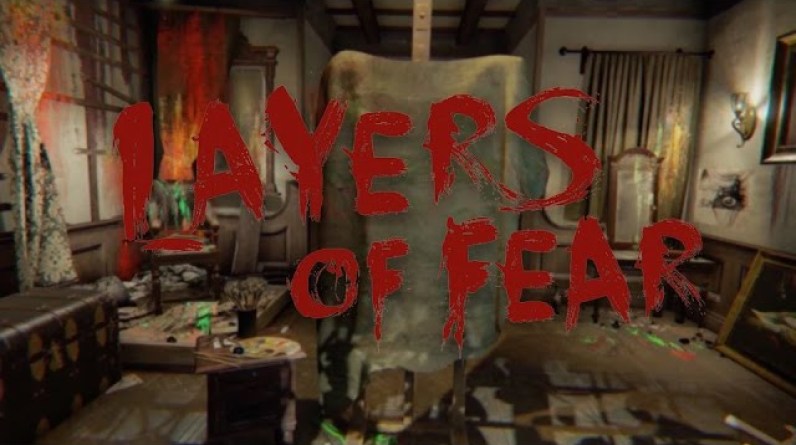
Introduction
Welcome, readers! In this guide, we’ll embark on an immersive journey through the chilling corridors of Layers of Fear, a psychological horror masterpiece that promises to unsettle and enthrall. We’ll uncover the secrets of this eerie Victorian mansion, unraveling its twisted narratives and navigating our way through its ever-shifting labyrinth of fear and madness.
To fully experience the game, it’s crucial to embrace its unique mechanics and gameplay elements. Let’s dive right into the shadowy depths and discover how to play Layers of Fear and conquer your darkest fears.
Understanding the Gameplay
1. Atmospheric Immersion: A World of Shadows and Madness
Layers of Fear is a first-person exploration game where the environment plays a crucial role. As we navigate the decaying rooms of the mansion, our surroundings constantly shift and transform. Doors vanish, walls shrink or expand, and the unsettling atmosphere creates a palpable sense of unease and dread.
2. Unraveling the Narrative: Fragments of a Shattered Mind
The game’s narrative is fragmented and non-linear, pieced together through scattered notes, paintings, and voice recordings. Players must meticulously explore and observe their surroundings to uncover the truth behind the mansion’s enigmatic history and the disturbing secrets that haunt its inhabitants.
Exploring the Haunted Mansion
1. Navigating the Unstable Environment
As mentioned earlier, the mansion’s environment is constantly changing. It’s essential to pay attention to visual cues and listen for unusual sounds that indicate impending transformations. Adapting quickly to the shifting layout is crucial to progressing through the game.
2. Interacting with Objects and Uncovering Secrets
Numerous objects can be interacted with throughout the mansion. Examining paintings, reading notes, and playing instruments can provide valuable clues and insights into the narrative and the characters’ motivations.
3. Facing the Supernatural: Confronting Your Fears
Layers of Fear is brimming with supernatural elements that aim to terrify and unsettle players. From ghostly apparitions to eerie whispers, it’s crucial to stay calm and composed while confronting these horrors. Remember, panic can lead to mistakes that may prove fatal.
Delving into the Mechanics
1. Health and Sanity: Preserving Your Mind
Players have both health and sanity meters that must be managed throughout the game. Health depletes from physical threats, while sanity decreases from exposure to psychological horrors. Maintaining high sanity levels is essential to avoid hallucinations and maintain a grip on reality.
2. Collecting and Using Items: Solving Puzzles and Progressing
Various items can be found and collected during gameplay. These items may be used to solve puzzles, unlock doors, or interact with the environment. Careful exploration and inventory management are key to progressing through the mansion.
Table: Common Objectives and Gameplay Tips
| Objective | Tips |
|---|---|
| Navigate Shifting Environments | Observe surroundings, listen for cues, adapt to changing layouts |
| Unravel Narrative Fragments | Explore thoroughly, examine objects, read notes and recordings |
| Confront Supernatural Threats | Stay calm, don’t panic, avoid making mistakes that deplete health or sanity |
| Manage Health and Sanity | Conserve health during physical threats, maintain high sanity to prevent hallucinations |
| Collect and Use Items | Search carefully for items, use them wisely to solve puzzles and progress |
Conclusion
Readers, conquering the depths of Layers of Fear requires a blend of courage, exploration, and puzzle-solving skills. By embracing the game’s chilling atmosphere and understanding its mechanics, you can navigate the haunted mansion, face your darkest fears, and uncover the secrets that lie within its shadowy corridors.
For further adventures in the realm of horror, be sure to check out our other articles on the subject. From haunted asylums to cursed artifacts, we’ve got you covered. Stay tuned and prepare for more spine-tingling experiences!
FAQ about Layers of Fear
How do I start the game?
To start the game, launch the game from your preferred platform (e.g., Steam, GOG). Follow the on-screen prompts to select options such as difficulty and graphics settings.
What are the controls?
The default controls are as follows:
- Movement: WASD
- Interact: E
- Pause: Esc
- Sprint: Left Shift
- Crouch: Left Ctrl
How do I progress through the game?
Explore the environment, interact with objects, and solve puzzles to uncover the story and progress. Pay attention to notes, paintings, and other environmental clues.
What are the different difficulty levels?
The game offers three difficulty levels: Story, Normal, and Master. Story mode provides a more relaxed experience, while Master mode increases enemy damage and reduces item availability.
What are the achievements?
There are 24 achievements in the game that can be unlocked by completing specific tasks or uncovering secrets. Check the in-game menu for a list of achievements.
How do I unlock hidden items?
Certain items can be found by interacting with hidden areas or objects. Explore thoroughly and listen for audio cues that may indicate the presence of secrets.
What should I do if I get stuck?
If you encounter a puzzle or area that you cannot solve, try exploring other parts of the environment or consulting online guides.
Are there multiple endings?
Yes, there are multiple endings depending on the choices you make throughout the game. The ending you receive will be influenced by your interactions and the secrets you uncover.
What is the significance of the paintings?
The paintings play a crucial role in the game’s story and atmosphere. They provide clues about the protagonist’s past and the events unfolding around him.
What are the recommended system requirements?
To play the game smoothly, it is recommended to have a computer with at least the following specifications:
- Operating System: Windows 7 64-bit or later
- Processor: Intel Core i5-2500K or AMD Phenom II X4 945
- Memory: 8 GB RAM
- Graphics: NVIDIA GeForce GTX 660 or AMD Radeon HD 7870
- DirectX: Version 11
- Storage: 6 GB available space


